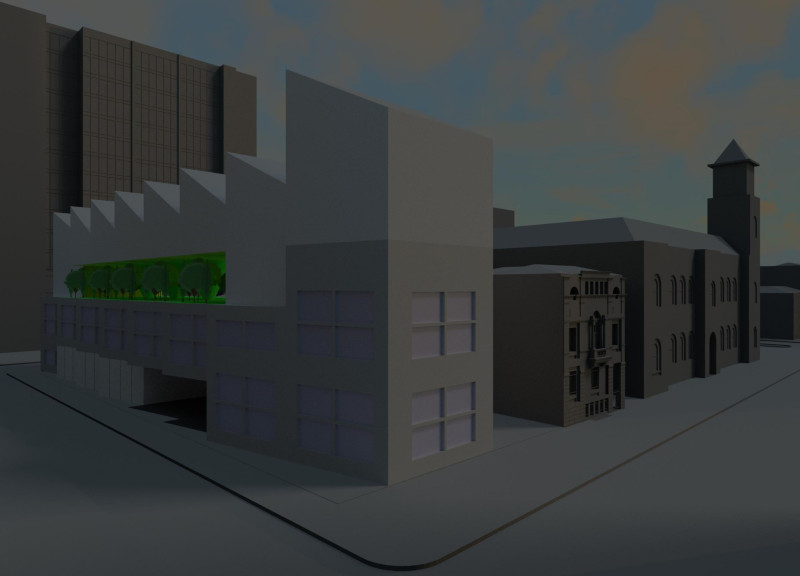5 key facts about this project
The design integrates a blend of modern materials and a thoughtful layout to ensure a welcoming environment. Notable elements include flexible space configurations and extensive use of glass to enhance natural light. The arrangement of zones allows for both communal and individual activities, accommodating workshops, performances, and informal gatherings.
Unique Design Approaches
One distinguishing feature of the Adelaide Creative Community Hub is its emphasis on sustainability. The green roof and public garden elements reflect a commitment to eco-friendly practices, promoting biodiversity and reducing the urban heat effect. This approach not only enhances the building's aesthetic but also serves a functional purpose in improving the local environment.
Another unique aspect of the design is the integration of various spatial functions that cater to different community needs. The multi-purpose space can host a range of events, while dedicated quiet areas provide essential spaces for individual reflection or focused work. This careful zoning fosters an atmosphere of creativity and encourages community interaction.
Functional Elements and Spatial Organization
The architectural organization is divided into functional zones, including a multi-purpose area designed for events and exhibitions, common work zones facilitating collaboration, and isolated work areas for individual tasks. The design promotes fluid movement throughout the building, fostering a sense of community while allowing for personal space when necessary.
Attention to materiality is also evident, with concrete providing structural support, glass maximizing transparency, and steel ensuring durability. These materials contribute to the overall modern aesthetic while respecting the historical context of the site.
For those interested in understanding the intricate details of the Adelaide Creative Community Hub, exploring the architectural plans, sections, and designs will provide deeper insights into this thoughtful project. The architectural ideas behind this hub exemplify a commitment to both community and sustainability, showcasing how architecture can effectively serve public needs.


























